Why Emotionally Intelligent Collectors Buy Art Without a Sales Pitch
Not every collector needs to be persuaded.
Some walk into a space, see a piece, and already know.
They’re not waiting for a sales script.
They’re waiting for resonance.
This kind of art buying isn’t reactive. It’s intuitive.
There’s no urgency, no hard close, no manufactured scarcity.
Emotionally intelligent collectors don’t respond to pressure. They respond to presence, in the work, in the space, and in themselves.
They’re not looking for decoration. They’re looking for something that holds what they can’t always name. And when they find it, they don’t need to be convinced. They just need to be allowed to feel it.
In this article, we’ll explore the shift away from persuasive art sales and into emotionally intelligent art collecting, why it’s growing, what defines it, and how this depth-first, pressure-free approach is shaping the future of high-end art acquisition.
We’ll also explore the psychology behind emotionally intelligent collectors, how they make decisions, and why story, stillness, and self-trust matter more than performance, prestige, or price.
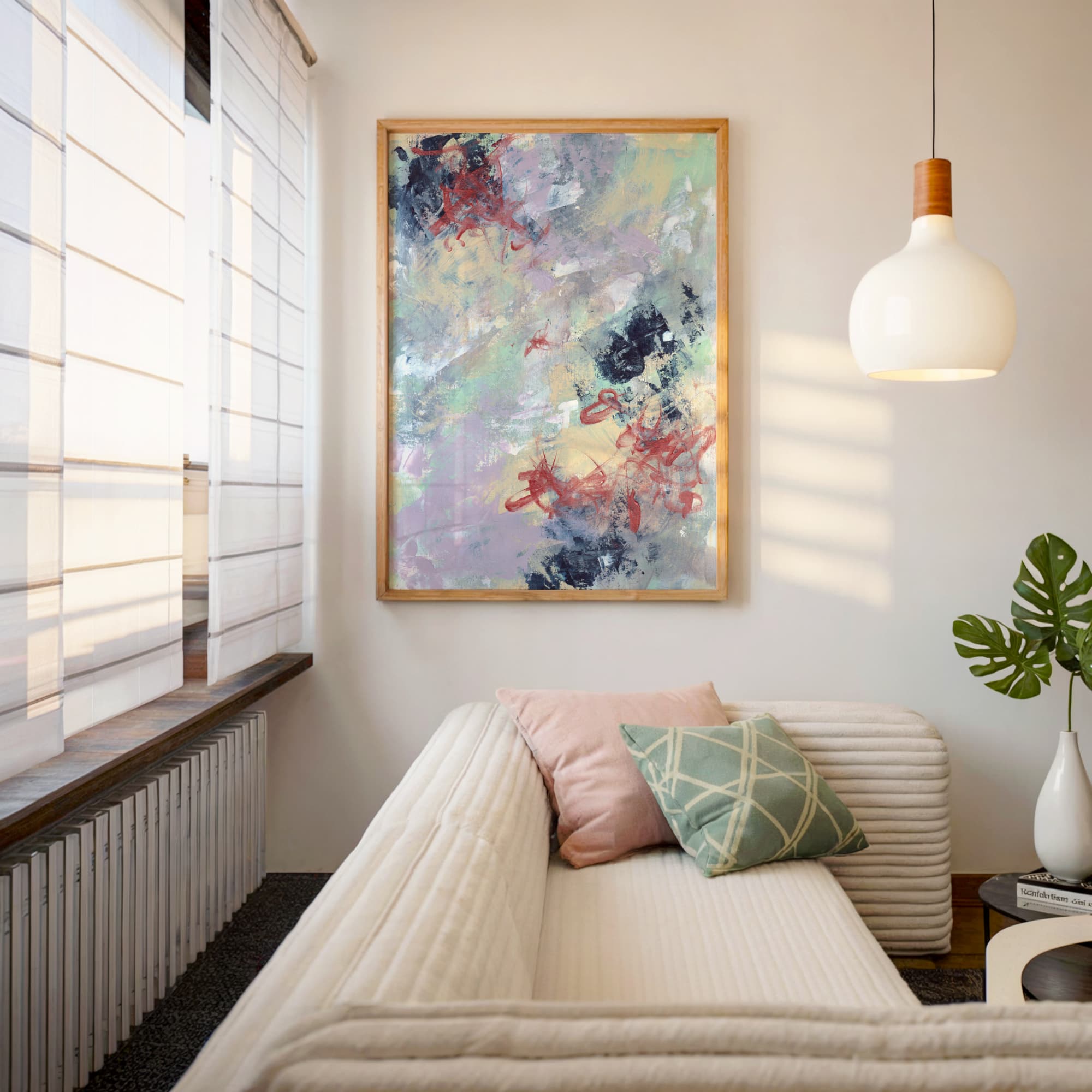

What Is Emotionally Intelligent Art Collecting?
Emotionally intelligent art collecting isn’t about status.
It’s about self-awareness.
At its core, this type of collecting comes from a different motivation than traditional acquisition. It’s not driven by trend, resale value, or external validation. It’s driven by the inner landscape of the person choosing the work, their emotional clarity, their desire for resonance, their capacity to feel, rather than perform.
Emotionally intelligent collectors don’t see art as a transaction. They see it as a relationship. They’re not just asking, “What does this piece say about me?” They’re asking, “What does this piece say to me?”
This shift changes everything.
Because the measure of value is no longer external.
It’s not about where it’s been shown.
It’s not about what it’s worth on paper.
It’s not even about whether other people will understand it.
It’s about connection.
Quiet, personal, and often unspoken.
These collectors are choosing work that reflects their internal world, not the world they perform in. Often, they’re not looking for the loudest piece in the room. They’re looking for the one that lets them exhale. The one that holds what they’ve carried privately. The one that doesn’t need explanation because it already makes emotional sense.
In emotionally intelligent art collecting, the piece doesn’t have to match the room. It has to match the life.
This is what makes the process so distinct. It’s not about acquisition. It’s about alignment. And when alignment is the goal, the entire dynamic between artist and collector becomes quieter, slower, and more respectful.
It becomes a conversation.
Not a pitch.
Why Sales Pressure Pushes Emotionally Intelligent Buyers Away
Emotionally intelligent collectors don’t respond well to pressure.
They’re not impatient.
They’re intentional.
And that’s a very different thing.
These are people who have often spent their lives in high-stakes environments, business, leadership, finance, public life, where performance is expected and persuasion is constant. They know the feel of a sales pitch. They can sense the shift in tone when something becomes transactional. And they step away from it.
Because they’re not buying for show.
They’re buying for something quieter.
The more emotionally aware someone is, the less they need to be persuaded. That’s not ego. It’s discernment. When someone has learned to trust their emotional responses, they don’t need to be walked through why something is meaningful. They either feel it or they don’t. And if they don’t, no amount of explaining will change that.
This is why traditional art sales techniques, urgency, exclusivity, manipulation masked as storytelling, fall flat with this kind of buyer. They don’t want to be closed. They want to be witnessed. They want to choose with spaciousness, not be cornered by scarcity.
For these collectors, the moment of connection with a piece is subtle but unmistakable. It often happens in silence. No music, no lighting tricks, no buzzwords. Just the work. Just the room. Just them.
And because the emotional experience of choosing is so internal, any external pressure can feel invasive. Even well-meaning commentary can cloud the clarity they’re trying to access. That’s why the environments where they collect matter, not just physically, but energetically. Quiet rooms. Unhurried conversations. No expectations.
They don’t need fanfare. They need space.
This doesn’t mean they don’t value quality or professionalism, quite the opposite. They value integrity, clarity, and emotional depth. But they want to feel like they’re arriving at the decision themselves, not being led toward it. The presence of the work is what draws them in, not the pitch.
And when it’s time to buy, they’ll buy. Quietly. Decisively. Without needing to be convinced.
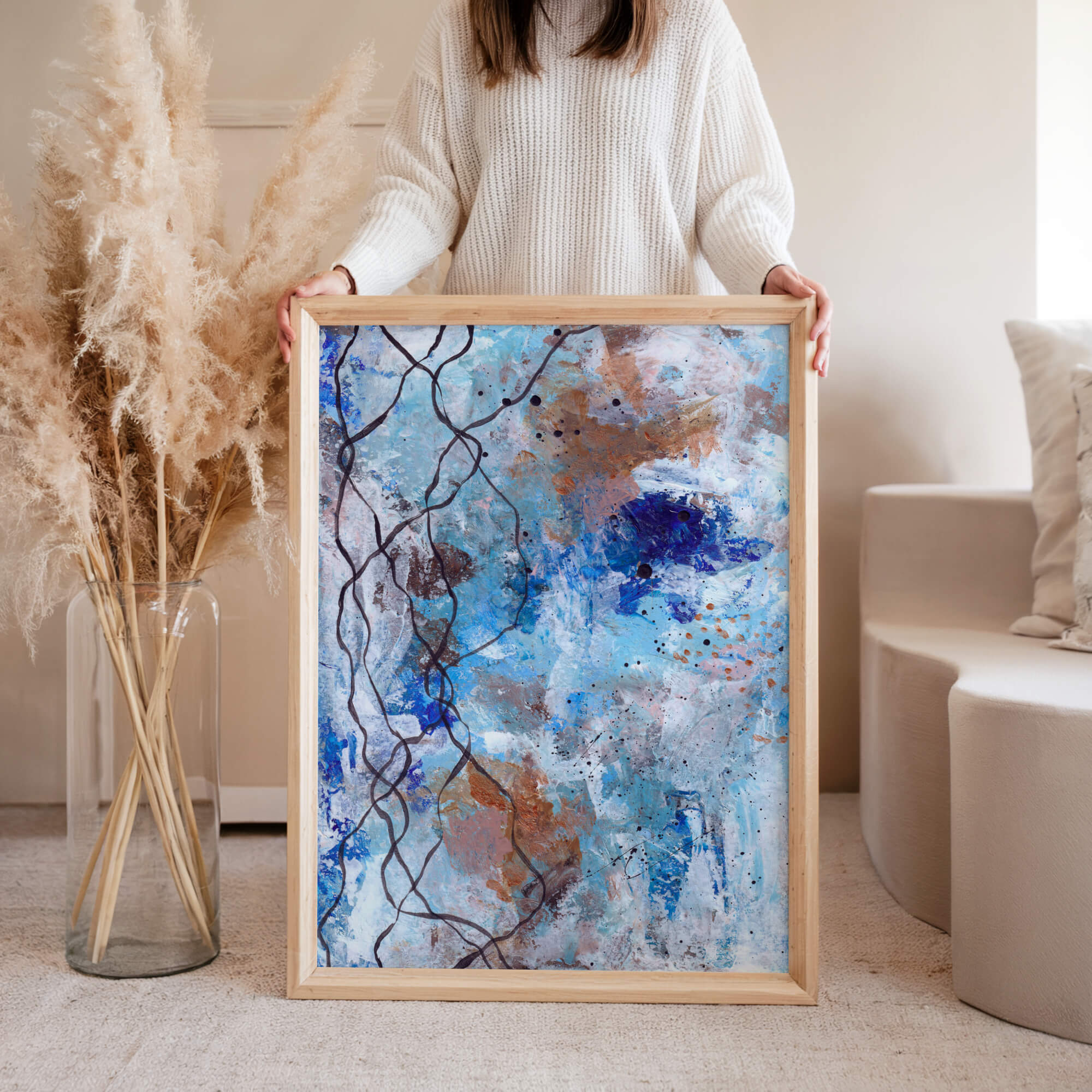
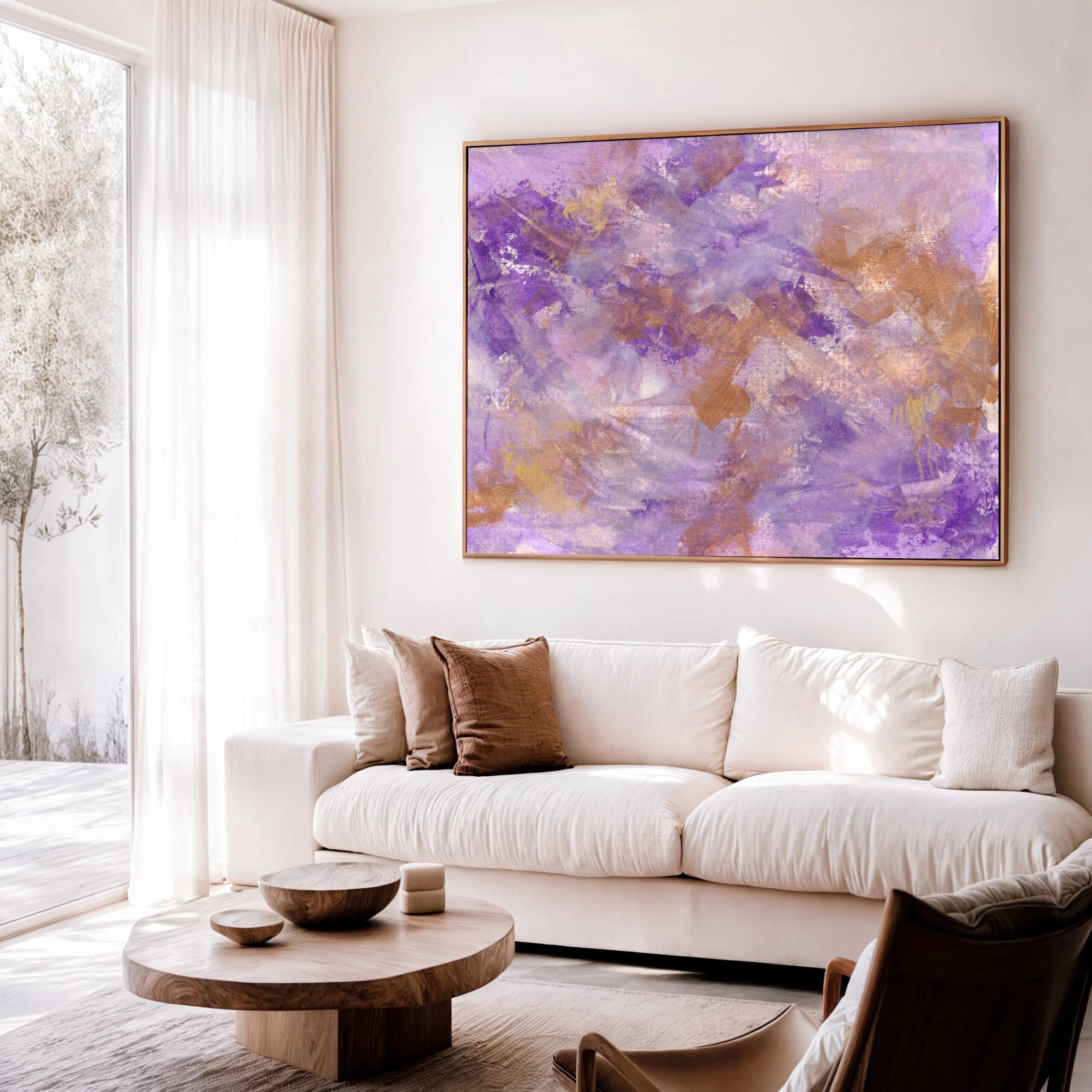
How Emotionally Intelligent Buyers Recognise the Right Piece
There’s no formula. No checklist. No right answer.
When emotionally intelligent collectors choose a piece, they’re not analysing it with a red dot sticker in mind. They’re not trying to prove their taste or predict its future value. They’re listening, not just with their mind, but with their body. There’s often a physical response before there’s a verbal one. A stillness. A catch of breath. A softening they didn’t expect.
The right piece doesn’t always come with clarity in words.
But it arrives with clarity in feeling.
This isn’t impulsive collecting. It’s deeply intuitive. These collectors may walk past dozens of technically flawless pieces without flinching, then stop cold in front of something quiet, something raw, something that says something real, even if they don’t know what that something is yet.
They don’t need the full story. They don’t need a certificate of meaning. What they need is recognition. The sense that something inside the work meets something inside them. That it holds a truth they’ve felt but never articulated. That it’s honest. And because they value emotional honesty above aesthetic perfection, they’ll take sincerity over status any day.
Often, these moments don’t happen in large crowds or at loud openings.
They happen in stillness. In solitude. In slow, spacious viewings.
They might return to the piece more than once. They might sit with it privately for weeks before making a decision. But when they do decide, it’s final. They’re not comparing. They’re not looking for reassurance. They’ve already felt the answer.
And this is where emotionally intelligent art collecting differs most from traditional models:
It’s not about choosing the “best” piece.
It’s about choosing the piece that holds their truth.
That truth may be hard. It may be beautiful. It may be both.
But when they find it, they’ll know.
And they won’t need anyone to tell them why.
The Role of Stillness in High-End Collecting
Stillness isn’t silence. It’s presence without performance.
For emotionally intelligent collectors, stillness is not the absence of movement, it’s the absence of noise. It’s the space where clarity emerges. And in a world saturated with content, opinions, and pressure to respond quickly, stillness has become one of the rarest and most valuable conditions for making meaningful choices.
This is especially true when it comes to collecting art.
Because emotionally intelligent collectors aren’t just acquiring objects. They’re making space for resonance. They need to feel what the piece is saying without interference. They need to sense how their body reacts in its presence. And for that to happen, stillness isn’t a luxury. It’s a requirement.
When an artist or curator creates stillness around the work, by refusing to oversell it, by allowing emotional space for reflection, by creating quiet environments for viewing, they’re not making the experience less valuable. They’re making it more trustworthy.
Stillness tells the collector: you’re not being rushed.
It invites them to drop their guard.
It allows the piece to speak for itself.
In the luxury sector, this kind of quiet is becoming a form of sophistication.
It’s no longer about overwhelming the senses.
It’s about refining them.
Spaces that used to be designed for spectacle are being reimagined as sanctuaries. High-end homes are being curated not for applause, but for emotional safety. And art, especially abstract, emotionally intelligent art, plays a crucial role in that shift.
These collectors are not looking for something to complete their décor.
They’re looking for something to complete a conversation they’ve been having internally.
And stillness makes that conversation possible.
It’s what allows the piece to meet the person where they are, not through explanation, but through quiet recognition. The kind of recognition that doesn’t need to be spoken to be understood.
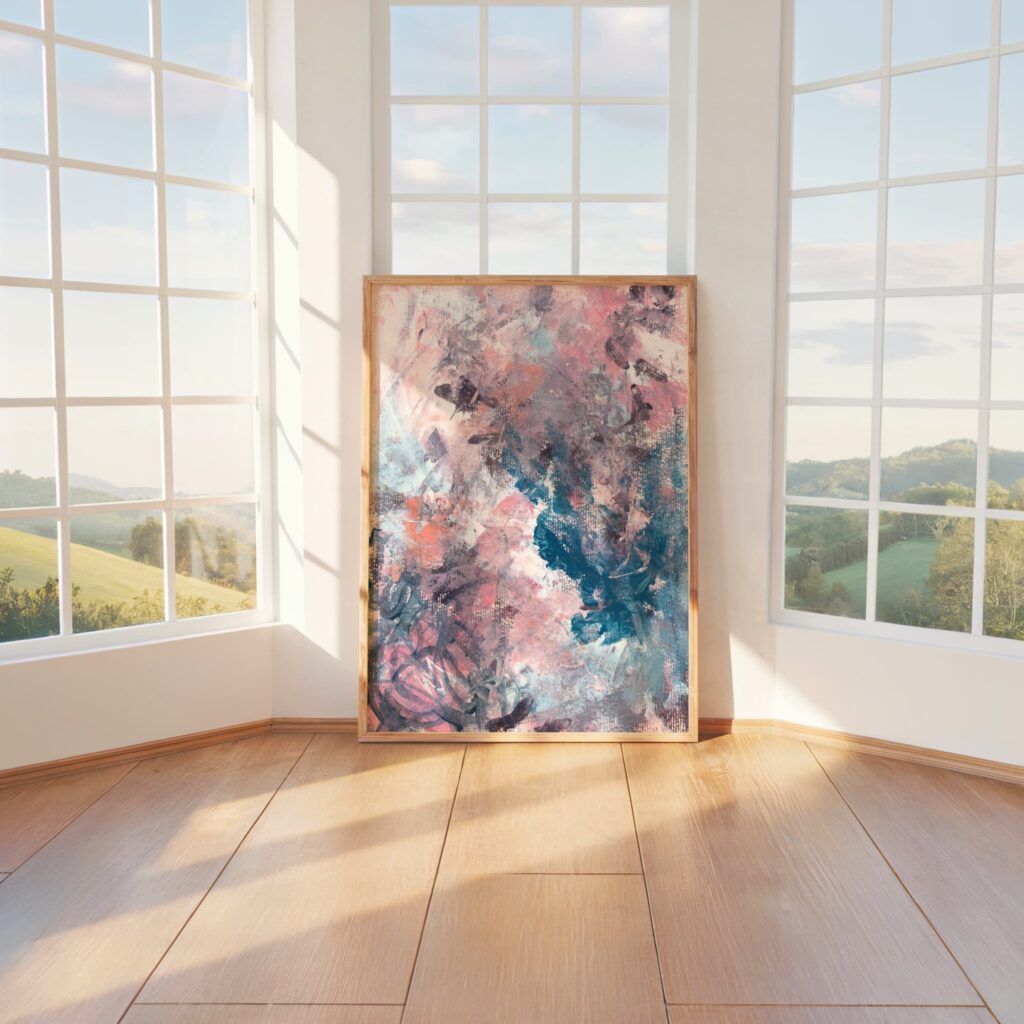
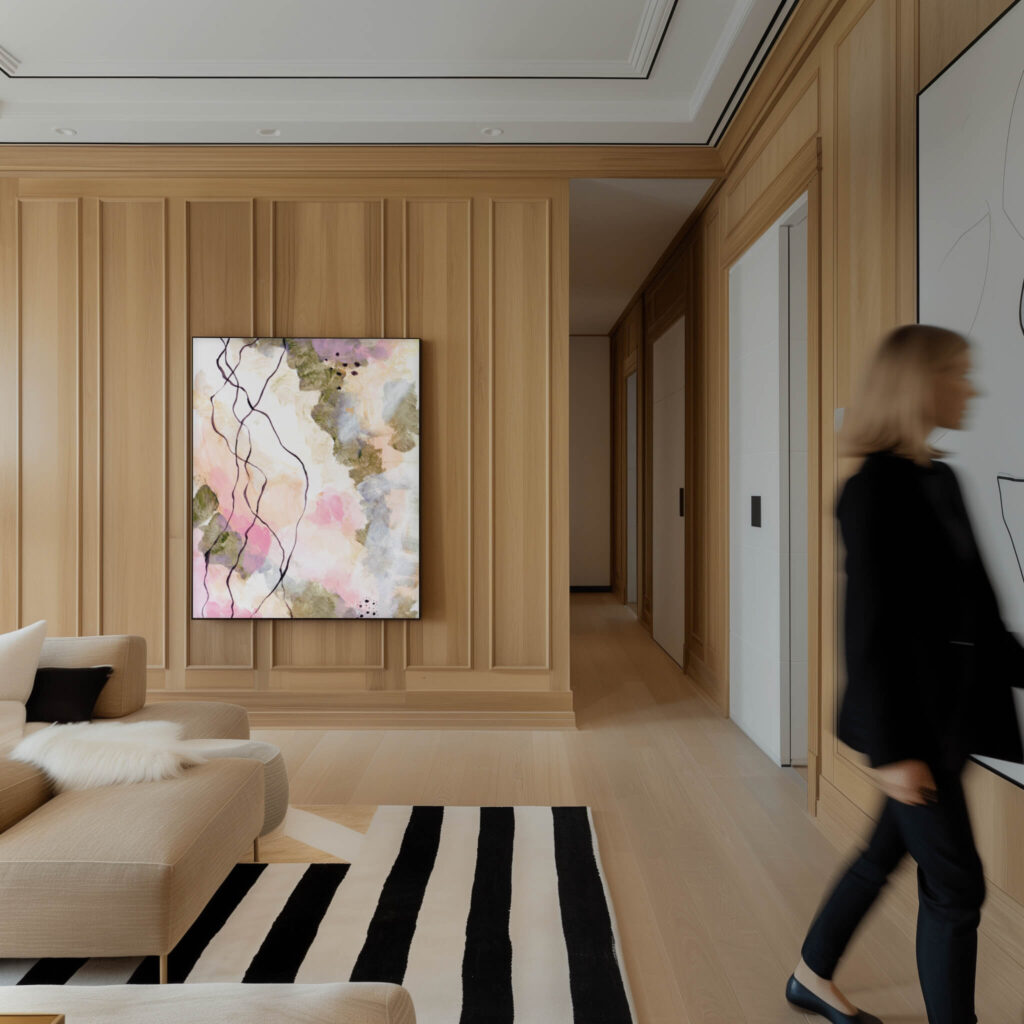
What Collectors Are Actually Buying (It’s Not the Art Alone)
On the surface, it looks like they’re buying a piece of art.
But that’s not the full story.
Not even close.
Emotionally intelligent collectors aren’t just investing in pigment on canvas. They’re buying something far less tangible and far more valuable: a feeling that hasn’t had a place to land until now. They’re buying relief. Resonance. Reflection. They’re buying the moment of stillness the work creates in them, the way it quiets the noise, names something private, or gives form to what they could never quite explain.
They’re not just buying the artwork.
They’re buying what it does to them.
That emotional shift, the drop in the chest, the release in the shoulders, the recognition of something deeply familiar, is the true purchase. The work may hang in their home, but it lives in their nervous system. It becomes part of their inner world. A companion. A witness. A kind of quiet anchor they return to again and again.
And that means the value of the work is no longer tied to its price tag or provenance.
It’s tied to its emotional gravity.
Collectors at this level aren’t seeking affirmation from others.
They don’t care whether the piece is understood by the public, or even by their peers.
What they care about is that it means something to them.
That it carries something real.
That it holds.
This is why emotionally intelligent art collecting has very little to do with decoration. These buyers aren’t trying to make their homes look a certain way. They’re trying to make their lives feel a certain way, more grounded, more truthful, more aligned.
They’re not looking for art to match the room.
They’re looking for art that matches the life they’re building now.
A quieter life. A truer one.
And once they find a piece that holds that feeling, the decision is already made.
The Death of the Sales Pitch in High-End Art
The traditional sales pitch, with its urgency, persuasion, and polished charm, doesn’t belong in the room anymore. At least not for the kind of collector who values presence over performance.
Emotionally intelligent collectors are not waiting to be impressed.
They’re waiting to be moved.
And the moment someone starts “selling” the work too hard, that moment is gone.
This shift isn’t about rejecting professionalism.
It’s about rejecting performance. Buyers at this level aren’t looking for a curated experience designed to manipulate emotion. They’re looking for the real thing. They’re looking for honesty, not hype. Space, not script.
What used to work, the gallery buzz, the fast talk, the collector FOMO, now feels out of sync with how people want to connect to the work. Especially for buyers who’ve spent their lives being sold to. They know what it feels like when someone has an agenda. And they know what it feels like when someone doesn’t.
They can tell when a piece is being presented because it matters, not because it’s marketable. And that distinction makes all the difference.
In many ways, the absence of a pitch is now a mark of respect.
It says: I trust you to feel what you need to feel.
I don’t need to explain this work into importance.
Its presence is enough.
And for the collector, that signals emotional safety. It says the decision is theirs. That they’re not being nudged, guided, or groomed. That they can respond in their own time, in their own way. That nothing is being asked of them, except to feel.
This isn’t a rejection of commerce. It’s a redefinition of connection.
When the performance of the pitch disappears, what remains is the possibility of something real: a quiet meeting between the work and the person it’s meant for. And that kind of meeting can’t be manufactured.
It can only be allowed.
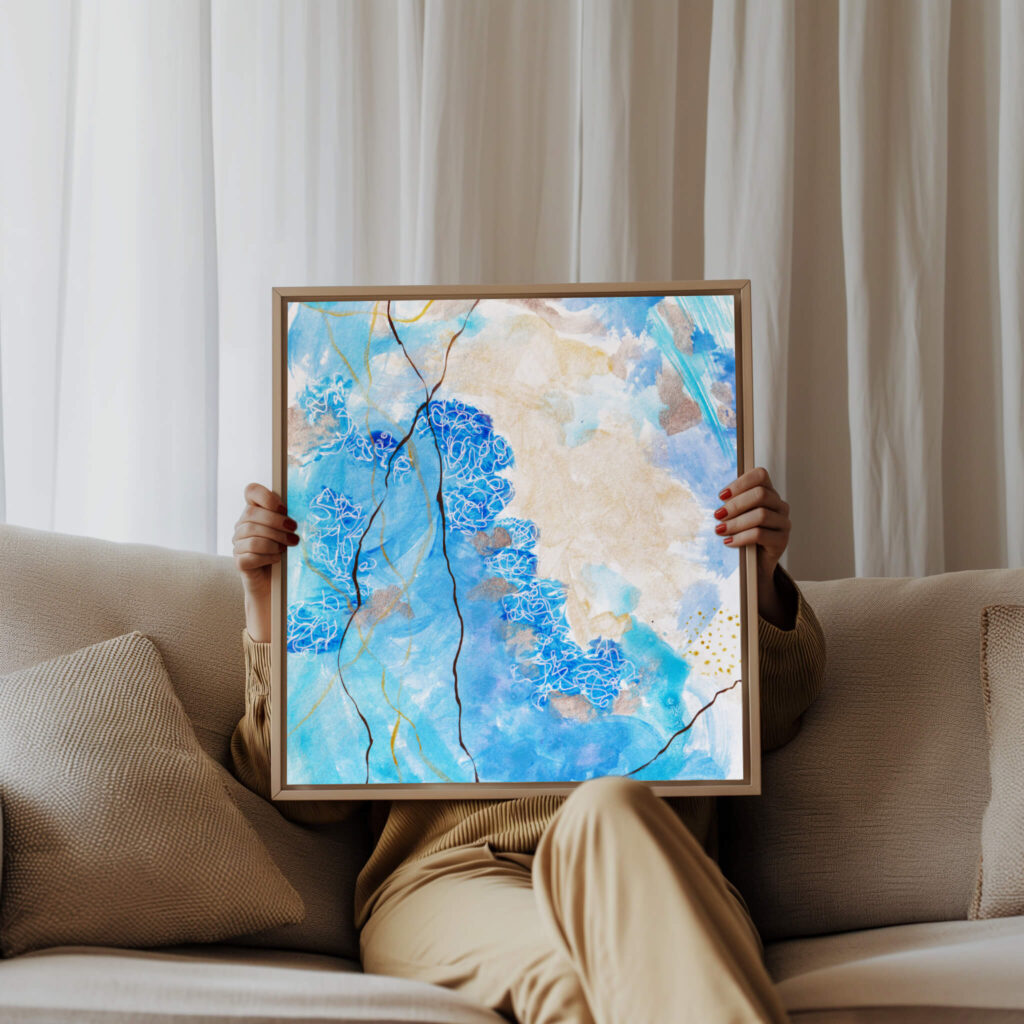

Why Emotional Trust Matters More Than Brand Recognition
There’s a kind of safety that doesn’t come from credentials. It comes from presence.
For emotionally intelligent collectors, that’s what matters. They’re not looking for prestige markers. They’re looking for emotional truth. And they can feel the difference, sometimes instantly, between someone who’s speaking from experience and someone who’s performing expertise.
They’ve seen enough brand polish to know when it’s masking something. They’re not impressed by high follower counts or art world status. If anything, that kind of visibility makes them pause. Because emotional depth isn’t loud. It doesn’t advertise itself. And it’s rarely found in the places where people are trying to be seen.
Collectors at this level want to know the work has been lived with. That it wasn’t made to impress, but to hold. That it came from something felt, not strategised, not positioned, not polished into perfection. And they can tell, even if the artist doesn’t explain it. Especially if they don’t.
This isn’t about oversharing. It’s about presence.
The artist doesn’t have to tell their whole story. But the work needs to feel like it holds one. Something real. Something human. Something that hasn’t been diluted for approval.
And the person representing the work, whether that’s the artist or someone else, needs to understand that. Because the second it starts to feel like a sales performance, the connection breaks. Emotional trust evaporates when the energy shifts from presence to persuasion.
Collectors don’t need to be convinced.
They need to be met.
They need space to feel, time to respond, and the sense that their decision matters more than the sale. That they’re not being nudged toward yes. That they can walk away and still be respected.
When they feel that, they’ll lean in.
Not because the brand is strong.
Because the presence is real.
Why Spaciousness Sells Better Than Strategy (in High-End Art)
You can’t script your way into someone’s emotional world.
Not in this kind of work. Not with these kinds of collectors.
Emotionally intelligent art collecting doesn’t respond to formulas. It responds to spaciousness. That doesn’t mean a lack of structure, it means a lack of pressure. No push, no persuasion, no funnel logic. Just room. Room to feel. Room to pause. Room to arrive fully before deciding.
Spaciousness says: I trust you.
And that trust is the reason these collectors buy. Because they’re not walking into the interaction wondering whether they like the art. They’re walking in wondering whether they’ll feel safe enough to connect with it.
That safety doesn’t come from strategy.
It comes from spaciousness.
From knowing they won’t be rushed. From sensing that nothing is being hidden or manipulated. From the feeling that they’re not entering a performance, they’re entering a real encounter.
This kind of buyer doesn’t follow call-to-actions.
They follow energy.
And if the space around the work feels spacious, grounded, unrushed, emotionally honest, that energy holds. It invites. It doesn’t chase.
There’s a reason more high-end buyers are drawn to unlisted offerings, invitation-only collections, and direct artist relationships. It’s not exclusivity for the sake of status. It’s emotional protection. A way to experience the work without noise, without performative hospitality, without needing to explain themselves.
And that experience begins with the space the seller creates.
Not just physical space, but energetic space, the kind that says, “You’re not being watched. You’re not being studied. You’re free to feel whatever this brings up.”
In a marketplace obsessed with strategy, this is radical.
And in luxury art collecting, it’s becoming essential.
Because the moment the buyer feels spaciousness instead of strategy, they can finally hear what the work is actually saying.
And that’s when they decide.
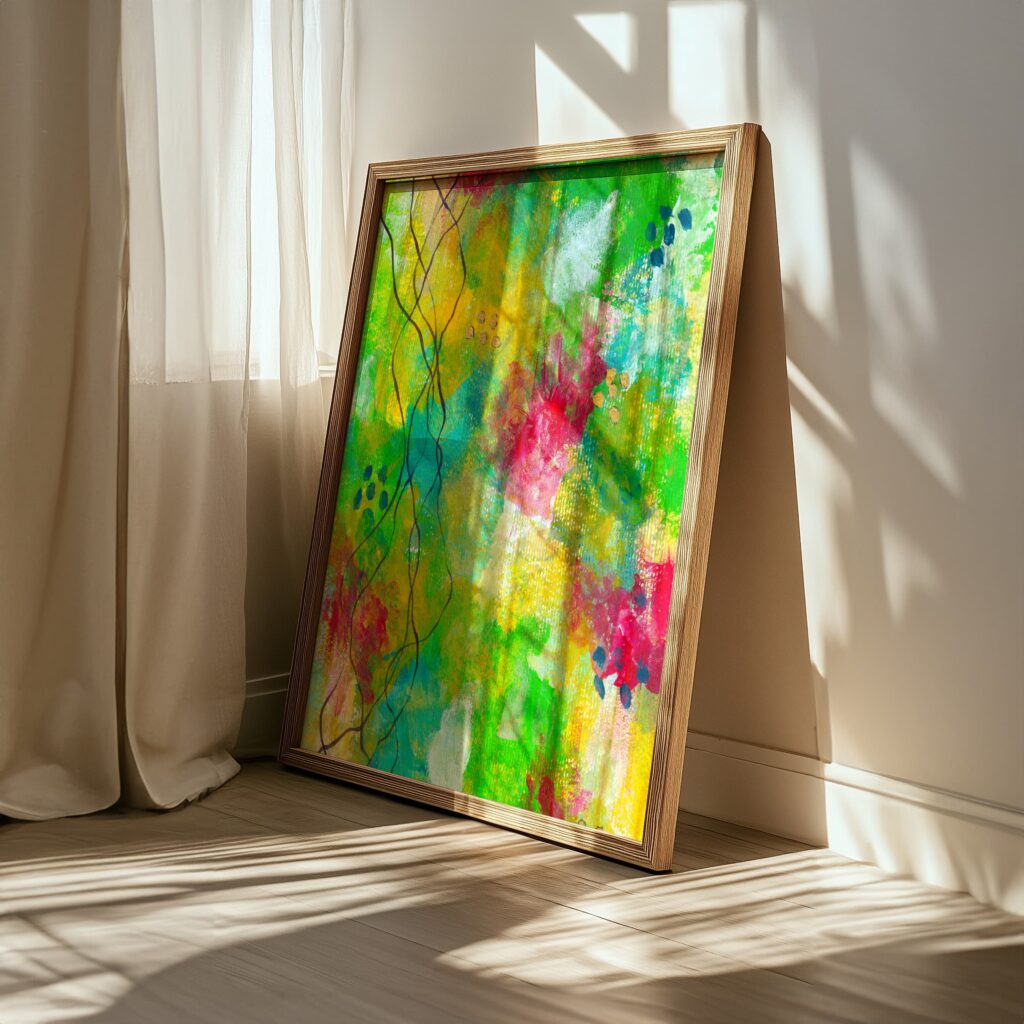
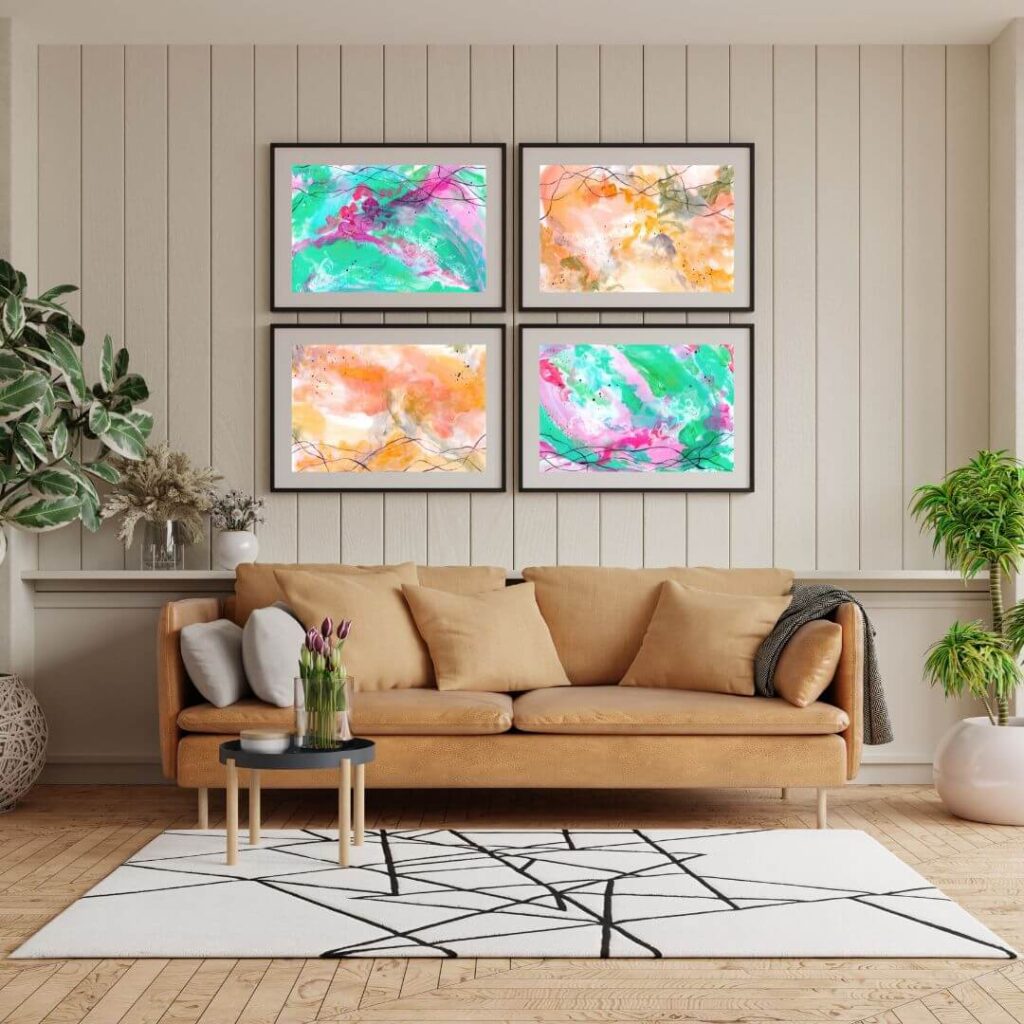
Why Emotional Trust Matters More Than Brand Recognition
There’s a kind of safety that doesn’t come from credentials. It comes from presence.
For emotionally intelligent collectors, that’s what matters. They’re not looking for prestige markers. They’re looking for emotional truth. And they can feel the difference, sometimes instantly, between someone who’s speaking from experience and someone who’s performing expertise.
They’ve seen enough brand polish to know when it’s masking something. They’re not impressed by high follower counts or art world status. If anything, that kind of visibility makes them pause. Because emotional depth isn’t loud. It doesn’t advertise itself. And it’s rarely found in the places where people are trying to be seen.
Collectors at this level want to know the work has been lived with. That it wasn’t made to impress, but to hold. That it came from something felt, not strategised, not positioned, not polished into perfection. And they can tell, even if the artist doesn’t explain it. Especially if they don’t.
This isn’t about oversharing. It’s about presence.
The artist doesn’t have to tell their whole story. But the work needs to feel like it holds one. Something real. Something human. Something that hasn’t been diluted for approval.
And the person representing the work, whether that’s the artist or someone else, needs to understand that. Because the second it starts to feel like a sales performance, the connection breaks. Emotional trust evaporates when the energy shifts from presence to persuasion.
Collectors don’t need to be convinced.
They need to be met.
They need space to feel, time to respond, and the sense that their decision matters more than the sale. That they’re not being nudged toward yes. That they can walk away and still be respected.
When they feel that, they’ll lean in.
Not because the brand is strong.
Because the presence is real.
The Shift from Showing to Sharing: What Quiet Collectors Actually Want
There’s a difference between showing something and sharing it.
Showing asks for approval. Sharing offers a glimpse.
And emotionally intelligent collectors are no longer interested in the show.
They’re not looking to fill their homes with impressive pieces just to impress others. They’re looking to live with work that mirrors something honest. Something they don’t need to explain or display. Something that’s allowed to stay private, even when it’s powerful.
These are not collectors who post every purchase online.
They’re not curating for validation.
They’re curating for alignment.
And when they do share, it’s not about the art’s value in the market. It’s about the art’s value in their life. A moment, a memory, a connection they never expected to feel again. A quiet “this helped me” rather than a loud “look what I bought.”
This shift is redefining how high-end art is experienced and why it’s chosen in the first place. Because when the goal is no longer to impress others, the work that enters a space changes. The entire energy around the purchase softens. Deepens. Becomes more about resonance than status.
Collectors are still sharing, but it’s happening quietly, in conversations with those who understand, in rooms that don’t need an audience, in moments where the presence of the work matters more than the recognition it might earn.
The artists who understand this are building lasting relationships, not just one-time sales.
Because the collector doesn’t want a pitch.
They want to feel like the work was made without them in mind, but still somehow found them.
That kind of connection doesn’t need to be shouted.
It needs to be protected.
And in that space, sharing becomes more powerful than showing ever was.
Because what’s real doesn’t need to perform.
My Offerings
Whether you’re a private collector, a wellness-focused brand, or a designer sourcing for a high-calibre project, I offer art that resonates deeply and subtly.

Collector's Vault
Canvas prints from the archive, made with emotional resonance and sustainable materials for spaces seeking depth.
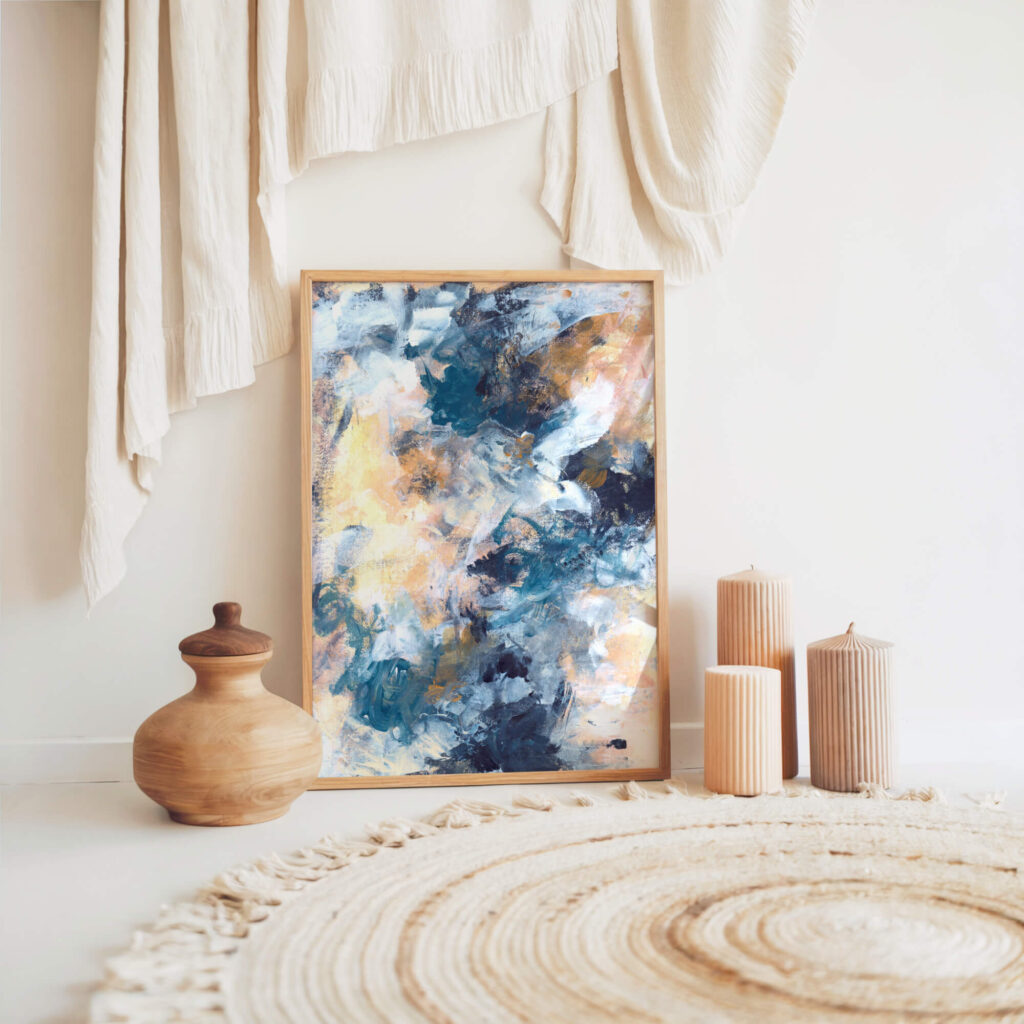
Capsule Commission
Created privately, one at a time, through stillness and reflection. Limited spaces each season to preserve depth and intimacy.
The Last 10
Ultra-limited, hand-embellished editions. No more than ten will ever exist. Made to ground, steady, and hold presence at the highest tier.
Why This Matters for Artists, Designers, and Collectors Alike
This shift isn’t just about how people buy art. It’s about how they live with it. And that matters, not just for collectors, but for the artists making the work, and the designers helping shape the spaces it lives in.
For artists, it changes the pressure.
You don’t need to package your process. You don’t need to be constantly visible or “build a brand” to prove your worth. If the work is real, if it holds something felt, that’s enough. These collectors aren’t looking for content. They’re looking for presence. They can feel the difference between something that was made for an algorithm and something that was made because it needed to be.
It doesn’t mean hiding. But it does mean you get to choose how and when you share. You don’t have to be online all day. You don’t have to explain every brushstroke. You can let the work do what it does, quietly, steadily, and trust that the right people will feel it.
For designers, it shifts what your clients actually need from you.
They’re not looking to match a trend or fill a blank wall. They’re asking for help creating spaces they can feel safe in. Spaces that don’t overstimulate or impress. Spaces where they can land, exhale, and return to themselves. And that means working with art that doesn’t just look good in a photo, it has to hold something emotionally real.
Your role becomes less about styling and more about listening. You become a kind of interpreter, understanding what the client carries, what they long for, and what kind of work will meet them there. That kind of curation takes more than an eye. It takes empathy.
And for collectors, this change is deeply personal.
It’s a permission slip to stop buying what you think you’re supposed to want, and start choosing what actually holds meaning for you. It’s a shift from “What does this say about me?” to “What does this say to me?” You’re not decorating. You’re building emotional space. And that’s not a process that can be rushed.
When everyone involved is grounded in that, when the artist creates from truth, the designer listens with care, and the collector leads with presence, something shifts.
It’s no longer about acquiring. It’s about honouring.
The work, the story, the space it’s being placed in.
And the quiet life it’s going to live once it’s there.
The New Collector Mindset: Emotion Over Explanation
Something important happens when a collector stops trying to explain their choices.
They start feeling them.
This doesn’t mean logic disappears or that research doesn’t matter. It means the centre of gravity shifts. From external validation to internal resonance. From justification to recognition. From “What does this say about me?” to “What does this say to me?”
The new collector isn’t asking for credentials. They’re asking for connection.
They don’t need a certificate to know a piece is powerful. They don’t need a name to know the work is right for them. They can feel it. In their chest. In their breath. In the way their body stills when they stand in front of it. That’s what they trust now, their own felt sense.
This is a complete reversal from the old model, where emotion was often dismissed as a weak or unserious motivator. Now, it’s the compass. The anchor. The thing that tells them whether a piece will last, not on the wall, but in their life.
And that kind of emotional clarity doesn’t come from a perfect bio or a smart-sounding write-up.
It comes from the work itself. From how it sits in space. From how it makes them feel in a quiet room. From how it speaks without words.
Collectors don’t need to explain this anymore.
They just need to experience it.
And once they do, once a piece lands like that, the need to justify anything disappears.
Because when it’s right, it’s right.
No one needs to agree.
No one even needs to know.
And for this new generation of emotionally intelligent collectors, that’s the whole point.
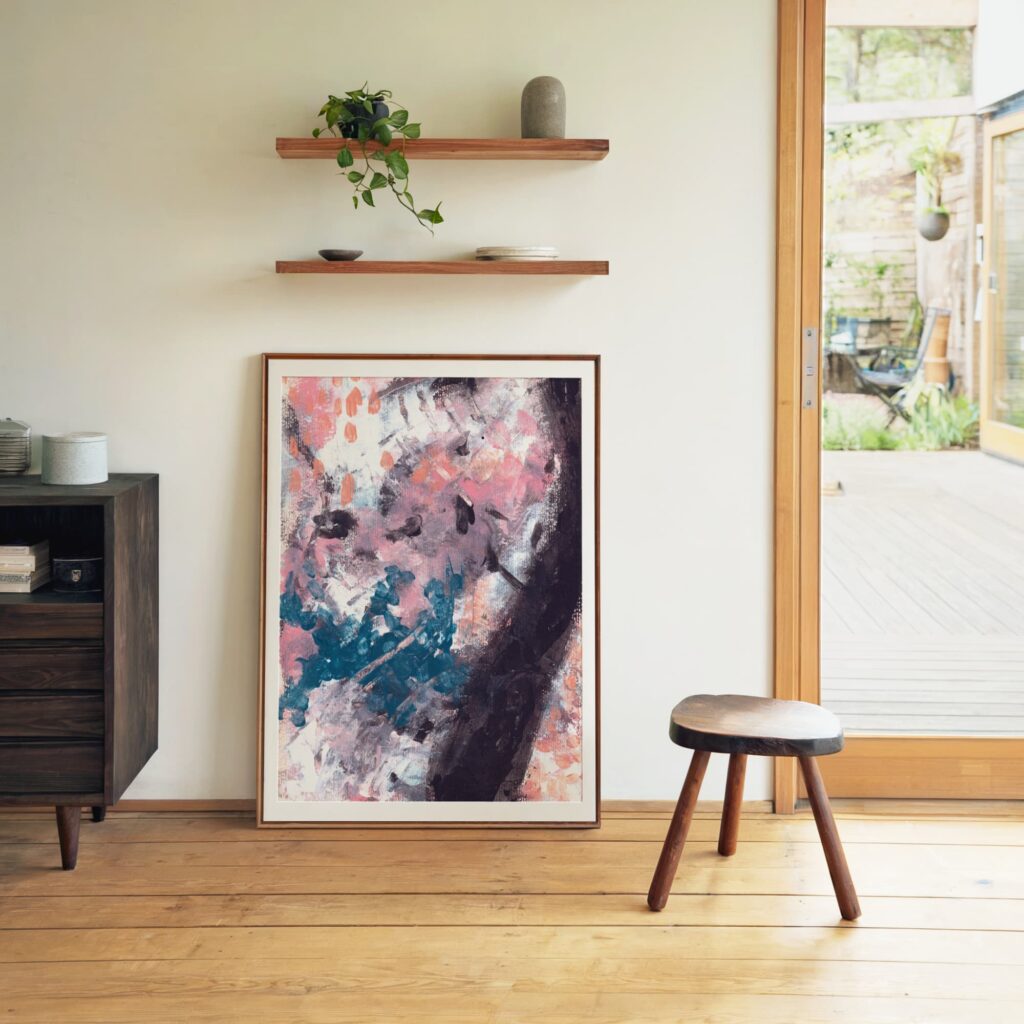
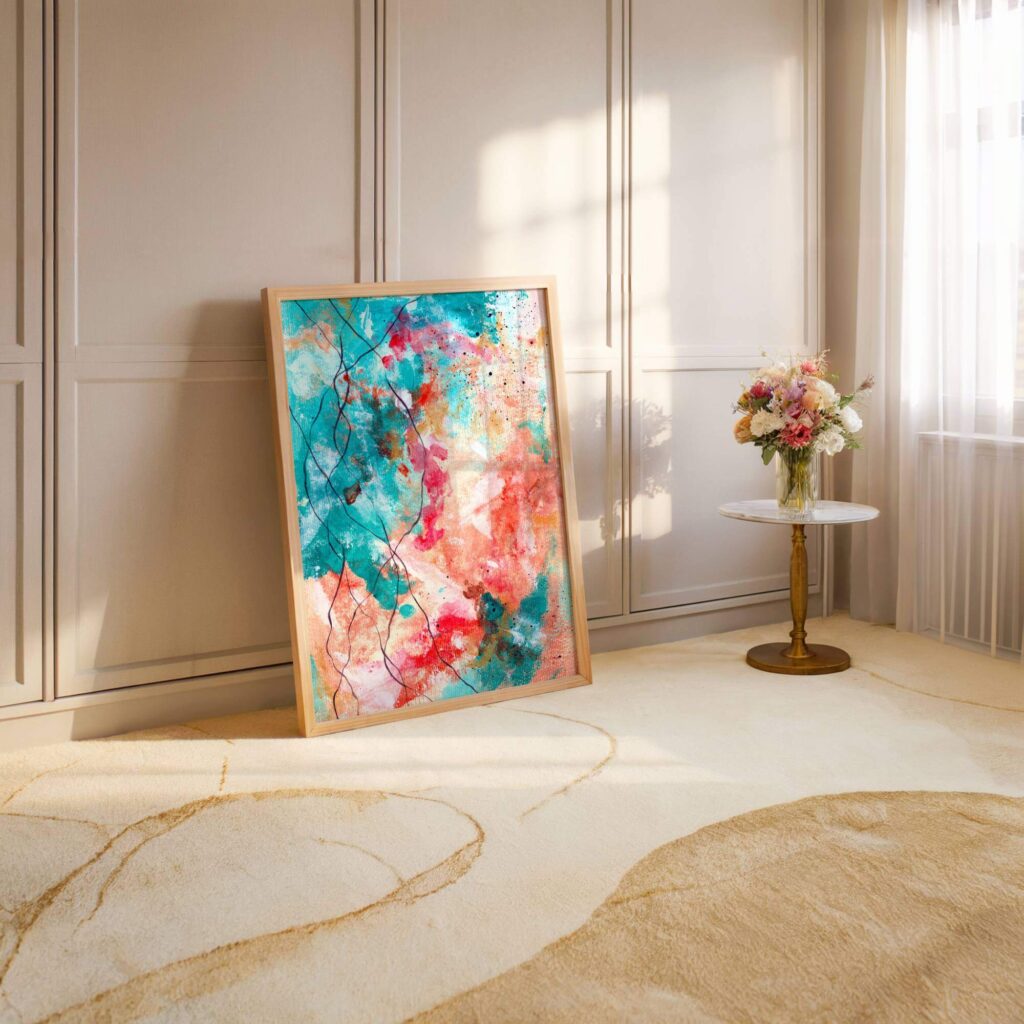
Creating an Invitation Instead of a Pitch: What Actually Works Now
The old way of selling art relied on pressure, prestige, and persuasion. It framed the transaction as a performance, built around scarcity language and high-stakes urgency. For a long time, that approach worked, especially in environments where the buyer was expected to compete, impress, or keep up.
But emotionally intelligent collectors aren’t interested in that dynamic anymore. They’re not looking to be convinced. They’re not waiting for a sales pitch. In fact, the moment they feel like they’re being sold to, something shuts down.
What they’re responding to now is very different. It’s not a push. It’s a quiet, grounded invitation one that leaves room for autonomy, for silence, for uncertainty. These collectors want space to feel their way into the decision. They want to trust their own timing. And most of all, they want to know that the work wasn’t made for the purpose of being sold. It was made because it needed to be made.
That’s what makes the offer trustworthy.
Creating that kind of invitation means shifting the energy of the entire interaction. It means letting go of urgency and replacing it with calm. It means replacing performance with presence. Instead of asking for the sale, you’re creating the conditions in which a sale might naturally happen, not because you asked, but because something in the work resonated deeply enough that the collector chose to step forward.
This doesn’t mean being passive. It means being intentional.
It means creating clear pathways for discovery without chasing attention.
It means offering access without demanding it.
For artists and curators, that might look like sharing the story of the work without overexplaining it. For designers, it might look like choosing pieces for clients that speak on an emotional level rather than just fitting the aesthetic brief. For collectors, it might look like trusting their instincts, even if no one else understands the choice.
The most effective art experiences today don’t feel like sales environments.
They feel like moments of recognition.
And in those moments, the right people don’t need convincing.
They just need to be given a door.
Conclusion: Why Emotionally Intelligent Art Collecting Is Here to Stay
The landscape of collecting is not simply shifting, it’s maturing. The people choosing art today are no longer seeking affirmation through visibility or trying to keep pace with trends that have little to do with who they are. They are returning to something quieter, more personal, more sustaining. What used to be measured in status or spectacle is now being measured in presence, emotional weight, and the capacity to create a life that actually feels lived in.
For many collectors, that means stepping away from spaces that ask them to perform. It means choosing work not because of who made it, how much it cost, or what it might signal, but because it holds something they didn’t have words for until they saw it. These decisions are not rushed. They are not made in crowded rooms or driven by hype. They happen slowly, often privately, and with a kind of reverence that isn’t common in fast, noisy markets.
Emotionally intelligent collecting is not about scarcity or status. It’s about timing. It’s about resonance. It’s about what happens when someone encounters a piece and something inside them stills. They don’t need to explain why it matters. They just know that it does.
And when collecting becomes that, a return to emotional truth rather than public validation, the entire process begins to feel different. It becomes nourishing. Protective. Intimate. Instead of being another task to optimise or another image to curate, it becomes a quiet act of care. Not only for the space, but for the person living inside it.
This is where my work now live, in that quiet. Not in showrooms. Not in feeds. In spaces that ask for stillness, and people who are ready to feel it.
If you’re one of them, you’re welcome to request access to the Collector’s Vault, a private catalogue of works not listed anywhere else. Or, if one of the themes in this article spoke to you, you can explore the limited edition Legacy Thread, an emotionally grounded offering for those curating private meaning into their walls.
Not everything needs to be public to be powerful.
Some things are more valuable because they’re held in quiet.
Let the work find you there.
